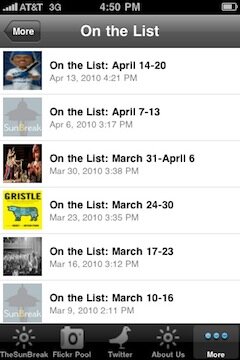posted 08/23/10 12:09 PM | updated 08/23/10 12:09 PM
Featured Post! | Views: 0 | Comments : 2 | Film & TV
Un-PC Cartoons at the Grand Illusion
Save and Share this article
Tags: dennis nyback, stetson kennedy, toonheads, superman, ku klux klan, theodore geisel, :dr. seuss, war propaganda
advertisement
Hello!
The SunBreak is an online magazine of news & culture. It's a conversation about all the things on Seattle's mind (more about us). Got a post for us? We'd like to see it. Or just send us . If you'd like to contribute regularly, .
Twitter: @thesunbreak | Facebook
iPhone app download (Free!)
Twitter: @thesunbreak | Facebook
iPhone app download (Free!)
advertisement
Subscribe to The SunBreak
Regular reader? Subscribe to The SunBreak for just $1 per month, and help keep the news & culture coming.
Delivery Options
 Subscribe to our Front Page Stories
Subscribe to our Front Page Stories
Delivery Options
![]() Subscribe to all SunBreak Stories
Subscribe to all SunBreak Stories
Daily Email Digest of The SunBreak
advertisement
Recently in Our Flickr Photo Pool
www.flickr.com
|
Neighborhood Blog News
Niche Blog News
Seattle Weather
Get the SunBreak iPhone App

Download the SunBreak iPhone app for free.
Not a Member?
Sign Up



Most Recent Comments